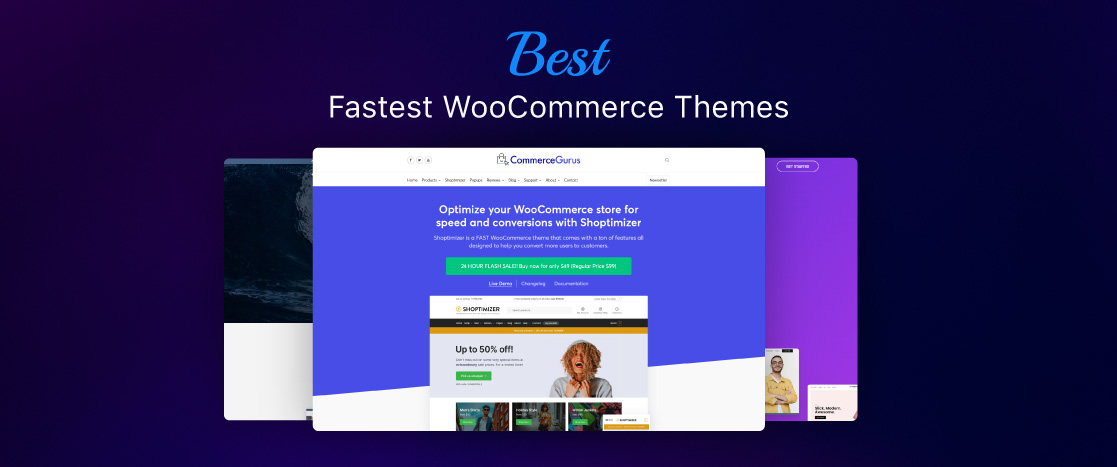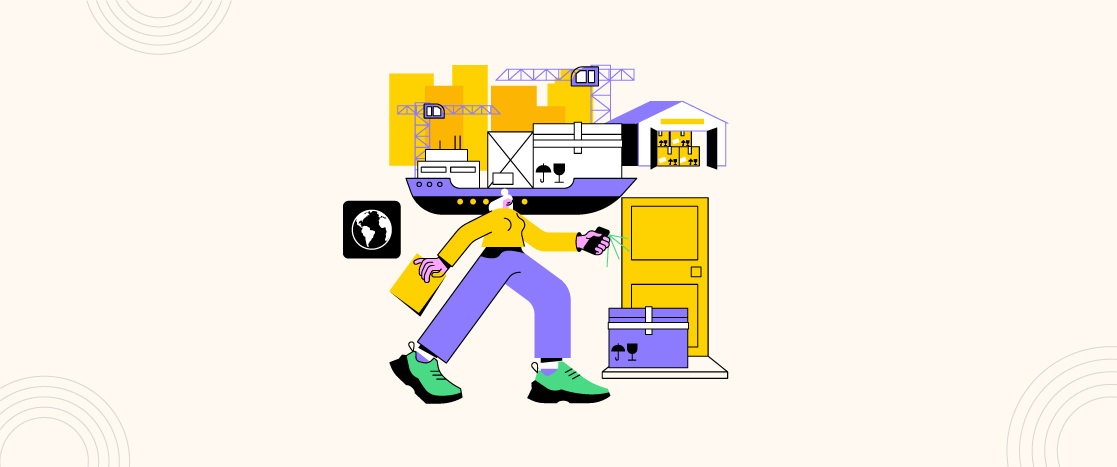
Ecommerce Landing Pages: How to Structure Your Online Store?
In the world of ecommerce, a landing page is a standalone web page specifically designed to drive conversions. Unlike other web pages that may serve multiple purposes, a landing page focuses on a single objective—encouraging visitors to take a specific action, such as making a purchase or signing up for a newsletter. Ecommerce landing pages are crucial for converting site visitors into customers, as they streamline the user experience and present a targeted message tailored to the visitor’s needs and interests.
The importance of landing pages for ecommerce conversions cannot be overstated. A well-designed landing page captures the essence of what the business offers and provides a clear pathway for potential customers to follow. By optimizing these pages, ecommerce businesses can significantly increase their conversion rates, leading to higher sales and improved return on investment (ROI). Landing pages differ from regular web pages because they are stripped of unnecessary distractions, focusing solely on the action the business wants the visitor to take.
High-converting ecommerce landing pages play a vital role in online sales. They serve as a first impression for potential customers and can make or break their decision to purchase. By utilizing compelling design, persuasive copy, and strategic calls to action (CTAs), businesses can effectively drive traffic and boost revenue. The benefits of well-designed landing pages extend beyond mere aesthetics; they enhance user experience, foster trust, and ultimately lead to higher conversion rates.
Key Elements of a High-Converting Ecommerce Landing Page
One of the key factors in creating effective ecommerce landing pages is understanding their essential elements. A clear and compelling headline is paramount. The headline serves as the first point of contact for visitors and needs to be concise yet impactful. It should immediately communicate the value proposition and grab user attention, enticing them to learn more.
Visual content is another critical component of ecommerce landing pages. High-quality product images significantly influence buying decisions. Engaging visuals not only showcases the products effectively but also create an emotional connection with potential customers. Incorporating videos can further enhance this connection by providing a more immersive experience that highlights product features and benefits.
A strong call-to-action (CTA) is essential for guiding visitors toward the desired outcome. Effective CTAs use persuasive language and are strategically placed within the landing page design. The design of the CTA button—its color, size, and shape—can also affect conversion rates.
Persuasive copywriting is a crucial element that works hand in hand with compelling visuals and CTAs. The copy should be product-focused and customer-centric, emphasizing benefits and solutions to the audience’s pain points. Using storytelling techniques can engage visitors on a deeper level, allowing them to envision how the product can improve their lives.
Social proof and testimonials play a significant role in building trust with potential buyers. Including customer reviews, ratings, and success stories can reassure visitors that they are making the right choice. The best practices for using testimonials involve showcasing authentic and relatable customer experiences that resonate with potential buyers.
Lastly, a simple and intuitive layout is vital for user experience. A clean design and easy navigation facilitate a smooth journey for visitors, allowing them to focus on the product and the action they need to take. An organized layout with clear sections can help guide the user’s attention and increase the likelihood of conversion.
Best Practices for Designing Ecommerce Landing Pages
Designing effective ecommerce landing pages is essential for boosting conversions and ensuring a seamless user experience. By focusing on key design elements and continuously optimizing pages, businesses can maximize engagement and drive sales. Below are five critical best practices for designing high-converting ecommerce landing pages.
1. Prioritize User Experience (UX) Design
The foundation of a successful ecommerce landing page lies in exceptional user experience (UX) design. Ensuring fast loading times, intuitive navigation, and responsive layouts are crucial for retaining visitors. Studies show that a delay of just a few seconds can lead to higher bounce rates, making it important to optimize page speed. In addition, ensuring the page is easy to navigate allows users to find what they need quickly, reducing frustration and improving the likelihood of conversion. A mobile-first approach is also essential, as a growing percentage of online shopping takes place on mobile devices.
2. Implement Personalization and Targeting Strategies
Personalization is a powerful tool for enhancing the relevancy of ecommerce landing pages. Tailoring the content based on user behavior, preferences, and demographics allows businesses to create more meaningful experiences. This can include displaying personalized product recommendations, location-based offers, or dynamic messaging that resonates with specific audience segments. Data-driven personalization strategies, such as using cookies or integrating CRM systems, enable businesses to connect with visitors on a more personal level, increasing the chances of conversion.
3. Utilize A/B Testing for Continuous Optimization
A/B testing is an invaluable method for refining ecommerce landing pages and identifying the elements that resonate most with the target audience. By testing different variations of headlines, images, calls-to-action (CTAs), and page layouts, businesses can gain insights into user behavior and preferences. Analyzing the performance metrics from these tests allows for data-driven decisions to optimize the page for better engagement. Whether testing minor changes, such as button color, or major elements like page structure, A/B testing helps ensure that the final version of the landing page is optimized for conversions.
4. Minimize Distractions to Keep Users Focused
Keeping the landing page clean and distraction-free is crucial for guiding users toward the desired action. Avoid cluttered designs that overwhelm visitors with excessive text, images, or promotional banners. Instead, focus on clear, concise messaging and strategic placement of elements such as CTAs, product images, and key benefits. Minimalistic designs help users stay focused on the main goal, whether it’s making a purchase, signing up, or downloading content. By reducing unnecessary distractions, businesses can create a smooth user journey that increases the chances of conversion.
5. Maintain Consistency with Branding and Messaging
A consistent brand identity across all landing pages helps reinforce trust and recognition with potential customers. Using cohesive visuals, colors, fonts, and messaging ensures that the brand is easily recognizable and professional. Consistency in branding builds credibility and reassures users that they are engaging with a trustworthy business. It also fosters a sense of familiarity, which can increase confidence in purchasing decisions. Whether users arrive at the landing page from a social media ad, email campaign, or search engine, the messaging and design should remain uniform to create a seamless brand experience across all touchpoints.
Types Of Ecommerce Pages You Should Create
Designing effective ecommerce pages is crucial for the success of any online business. From the homepage to the checkout process, each page plays a vital role in creating a seamless and compelling user experience that drives sales and customer loyalty. In this comprehensive guide, we’ll explore the key principles and best practices for designing ecommerce home pages, category pages, product pages, checkout pages, and essential policy and legal pages, as well as the importance of the wishlist feature. By understanding the strategic elements of ecommerce page design, you can create a digital storefront that captivates and converts your target audience.
Ecommerce Home Page Design
The ecommerce homepage is the digital storefront of your online business. It’s the first impression customers have and can significantly influence their decision to stay or leave. A well-designed homepage should be visually appealing, intuitive to navigate, and effectively communicate your brand’s value proposition.
A successful ecommerce homepage should have clear navigation, compelling visuals, a strong call to action, highlighted products, social proof, mobile optimization, consistent branding, and personalized content. This combination of elements allows customers to easily find what they’re looking for, be visually impressed by your products, take action, discover popular or new items, trust your brand, shop conveniently on any device, recognize your brand’s identity, and receive tailored recommendations.
Ecommerce Category Page Design
The ecommerce category page is a crucial component of your online store, serving as a gateway to specific product offerings. A well-designed category page can significantly enhance user experience and drive sales.
Clear and concise titles that accurately reflect the products within the category are essential. Intuitive navigation, such as a hierarchical or faceted system, allows customers to easily filter and refine their search. High-quality product images and videos showcase key features and benefits.
A clear call to action, like “Add to Cart” or “Buy Now,” encourages customers to take action. Suggesting complementary or related products increases average order value and encourages further exploration. Customer reviews and ratings build trust and credibility. Mobile optimization ensures your category pages are accessible to the growing number of mobile shoppers.
Additional tips include using breadcrumbs to help customers understand their location within the website hierarchy, implementing sorting options to allow customers to sort products by price, popularity, or other relevant criteria, and considering pagination to break down large product lists into manageable pages to improve loading times and user experience. A/B testing different layouts and designs can help identify the most effective elements for your target audience.
Ecommerce Product Page Design
Your product page isn’t just a page; it’s your virtual salesperson. It’s gotta be good, man. Here’s how to make it a real showstopper:
First, give it a clear title. Don’t beat around the bush. Tell ’em what it is! Second, use awesome images. Pictures are worth a thousand words, so make ’em count. Show it off from all angles. Third, write a killer description. Don’t just list features; tell ’em why they’re awesome.
Don’t forget to include customer reviews. Let your happy customers do the talking.
Finally, make sure it’s mobile-friendly. Most people shop on their phones. Make sure it looks good on the small screen.
If you can, use videos. People love watching stuff. Show your product in action, give a quick tutorial, or even just have a funny commercial.
Remember, your product page is your chance to shine. Make it count!
Ecommerce Checkout Design
The checkout page is a critical stage in the customer journey. A well-designed checkout page can significantly impact conversion rates and customer satisfaction.
To create a professional checkout page, it’s essential to prioritize clarity, convenience, and security. Use clear and concise language, avoiding jargon or technical terms. Offer guests the option to purchase without creating an account, reducing friction in the checkout process. Provide a variety of payment methods to accommodate different customer preferences and ensure a seamless experience. Utilize a trusted payment gateway to protect customer data and instill confidence in the checkout process.
To enhance user experience, display clear progress indicators to inform customers of their current stage in the checkout process, reducing anxiety and providing a sense of control. Provide a detailed order summary, including itemized products, shipping costs, and taxes, to ensure transparency and clarity. Allow customers to enter coupon codes for discounts, incentivizing repeat purchases and increasing customer loyalty. Ensure the checkout page is fully responsive and optimized for mobile devices, accommodating the growing number of mobile shoppers. Eliminate unnecessary elements that might distract customers from completing their purchase, focusing their attention on the checkout process.
To further improve the checkout experience, consider utilizing saved customer data to pre-fill fields like shipping address and contact information, reducing the effort required for customers and improving the checkout experience. Provide real-time shipping estimates based on customer location and order details, enhancing transparency and reducing uncertainty. Implement HTTPS and SSL certificates to protect customer data and create a secure checkout environment. Finally, conduct rigorous testing on various devices, browsers, and operating systems to ensure a consistent and reliable checkout experience across all platforms.
Ecommerce Policy and Legal Pages
Policy and legal pages are crucial components of any ecommerce website, serving as a foundation for trust and transparency between businesses and customers. These pages provide essential information about your business practices, protect your legal interests, and ensure compliance with relevant laws and regulations.
The terms of service outlines the terms and conditions governing your website’s use. It typically includes information about user conduct, intellectual property rights, dispute resolution, and limitations of liability. By requiring customers to agree to your terms of service before making a purchase, you establish a legal framework for your business and protect yourself from potential legal claims.
The privacy policy details how you collect, use, and protect customer data. It should clearly explain what information you collect, why you collect it, how you use it, and what steps you take to protect it from unauthorized access. A comprehensive privacy policy demonstrates your commitment to data security and helps build trust with your customers.
The shipping policy outlines your shipping procedures, including shipping costs, delivery times, tracking information, and return policies. A clear and concise shipping policy helps customers understand what to expect from the shipping process and can reduce confusion and inquiries.
The return policy outlines your return and exchange policies, including the return window, eligible items, and refund procedures. A fair and customer-friendly return policy can help build trust and encourage repeat purchases.
The refund policy details your refund procedures, including the refund process, eligibility criteria, and refund methods. A clear refund policy helps customers understand their rights and options in case of dissatisfaction or issues with their purchase.
The cookie policy explains how you use cookies and other tracking technologies on your website. It should provide information about the types of cookies you use, their purposes, and how customers can manage their cookie preferences. A transparent cookie policy helps customers understand how their data is used and gives them control over their privacy settings.
Ecommerce Wishlist Design
The wishlist feature is a valuable addition to any ecommerce website, providing customers with a convenient way to save products they’re interested in for future consideration or purchase. By offering a wishlist, you can enhance customer engagement, increase customer satisfaction, and ultimately boost sales.





